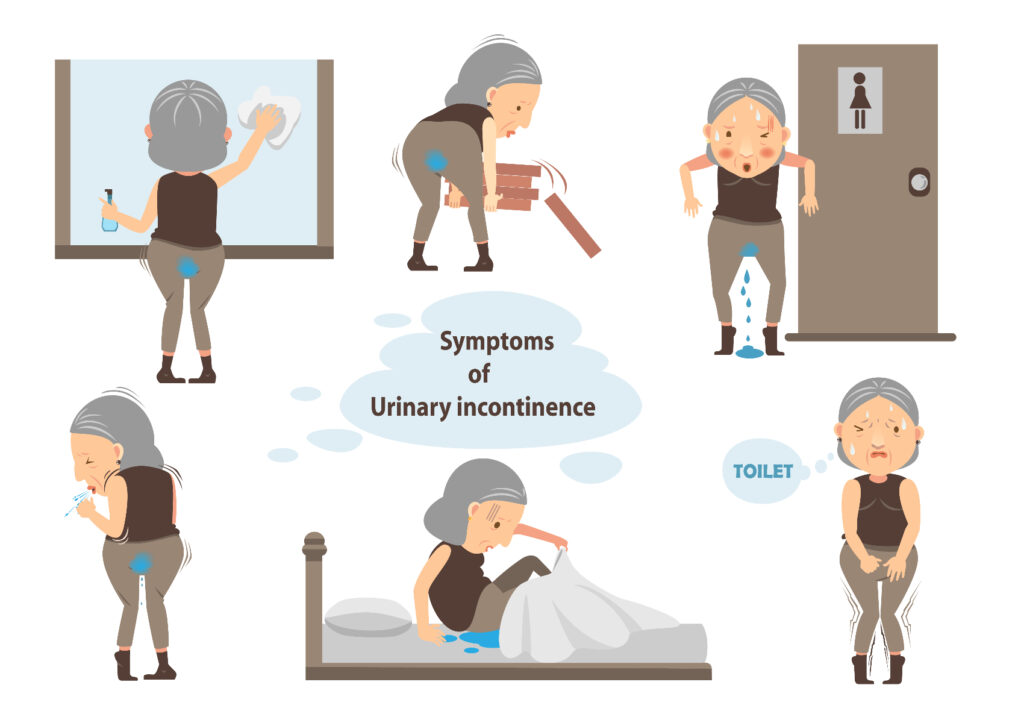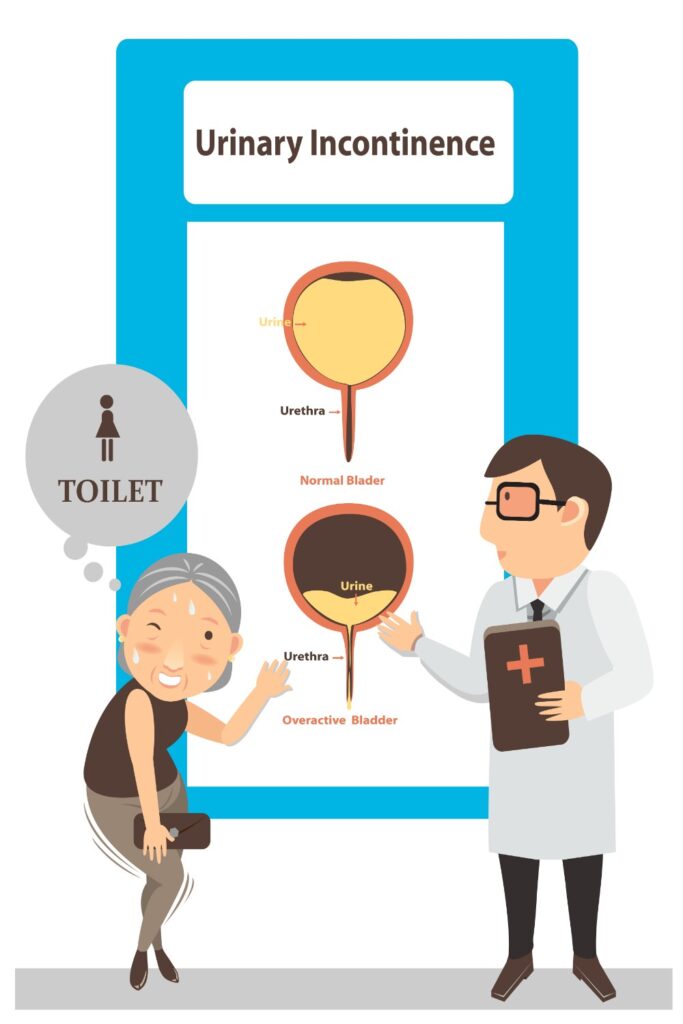
Do you worry that if you cough, sneeze or lift a heavy object that urine will leak from your bladder? Does the fear of being embarrassed by your urine leakage limit your life?
You have probably been wondering what causes this? What can I do about it?
Urinary incontinence is a common problem, especially among women. According to the American Medical Association Journal, 50% of women will have incontinence during their lifetime. Pregnancy and childbirth put women at a much higher risk of developing incontinence. Hormonal changes that occur with can also cause weakening of your pelvic floor which can cause urinary incontinence. Men also experience incontinence but it is much less common.
Urinary incontinence can interfere with your self-esteem and quality of life. You may fear going out in public and having urinary leakage. You fear that other people may see your wet pants or smell the urine. There are many good products to help both women and men to avoid this embarrassment and keep clothing dry. Some treatments may improve or eliminate incontinence. Would you like to know more? Then read on!
The 5 types of urinary incontinence
There are 5 main types of incontinence. They are stress incontinence, urge incontinence, mixed incontinence, overflow incontinence, and functional incontinence. 
1. Overflow incontinence is when your bladder does not empty completely which causes you to frequently dribble urine. This is often the type that affects men who have enlarged prostates. There are several washable underwear options for men to discretely manage urinary incontinence.
2. Functional incontinence occurs when a person has a disability or limited mobility that makes it difficult for them to get to the bathroom in time. Limited mobility may make pulling down clothing in time to go to the bathroom difficult. These types of incontinence, overflow, and functional occur much less frequently than the other 3 types.
Including the 3 types of urinary incontinence that occur frequently in women
3. Stress incontinence is very common among women; this is the type often caused by pregnancy and childbirth. Pregnancy and giving birth cause pressure which can change or damage your urinary system. The muscles of your pelvic floor and around your urethra sphincter weaken. Due to the weakness of these muscles. The change in pressure on your bladder during exercise, coughing, or sneezing can cause urine leakage. In men surgery to remove the prostate is the leading cause of stress incontinence.
The number one conservative treatment to improve stress incontinence and other forms of incontinence is to do kegel exercises regularly. This exercise helps to strengthen the muscles of the pelvic floor. There are products to help you with kegel exercises and improving the muscle strength of your pelvic floor. Excess body weight also puts more pressure on abdominal organs causing an increased risk for stress incontinence. So, losing weight may help improve stress incontinence.
Urethra supports are similar to a tampon and can be inserted into the vagina to help support your bladder which can cause pressure on your urethra to improve urinary leakage caused by stress incontinence. One such product is called Revive. Different surgical procedures are available if less invasive treatment does not help. You can read more about surgical options here to treat stress incontinence.
4. Urge incontinence is often called overactive bladder. Symptoms include getting a sudden urge or bladder spasm then urine leakage. Oftentimes it may come on so quickly you can not get to the bathroom in time. Neurological disorders such as Parkinson’s disease or Multiple Sclerosis can cause urge incontinence. Diabetes or an enlarged prostate can also cause urge incontinence.
There are several different treatments for overactive bladder including medications and surgery. A few common medications are oxybutynin, myrbetriq, and Detrol. Oxytrol for urge incontinence in women can be purchased over the counter. Two surgical procedures for urge incontinence involve implanting an electrical nerve stimulator. They are sacral nerve stimulation and percutaneous tibial nerve stimulation. There is also surgery to increase the urine holding capacity of your bladder. You can find more information about surgical options for UI, here.
Other options for urge incontinence include biofeedback and bladder training. Eliminating things from your diet that can increase your symptoms such as caffeine, carbonated beverages, and alcohol may help.

iStim V2 Kegel Exerciser Incontinence Stimulator with Probe for Bladder Control and Pelvic Floor Exercise for Women and Men Electrical Muscle Stimulator
5. Mixed urinary incontinence is when you have the symptoms of two types of incontinence. Most often you have symptoms of both urge incontinence and stress incontinence. You experience both the urgent need to urinate as well as have leakage from pressure caused by coughing, sneezing, and exercise. The same treatments that would be tried are for stress and urge incontinence.
Don’t let urinary incontinence limit your ability to get out and enjoy your life. There are products you can buy to manage your urinary incontinence and treatment options available to you. Do not waste time talking to your doctor about your options so you can get out and enjoy your life.
